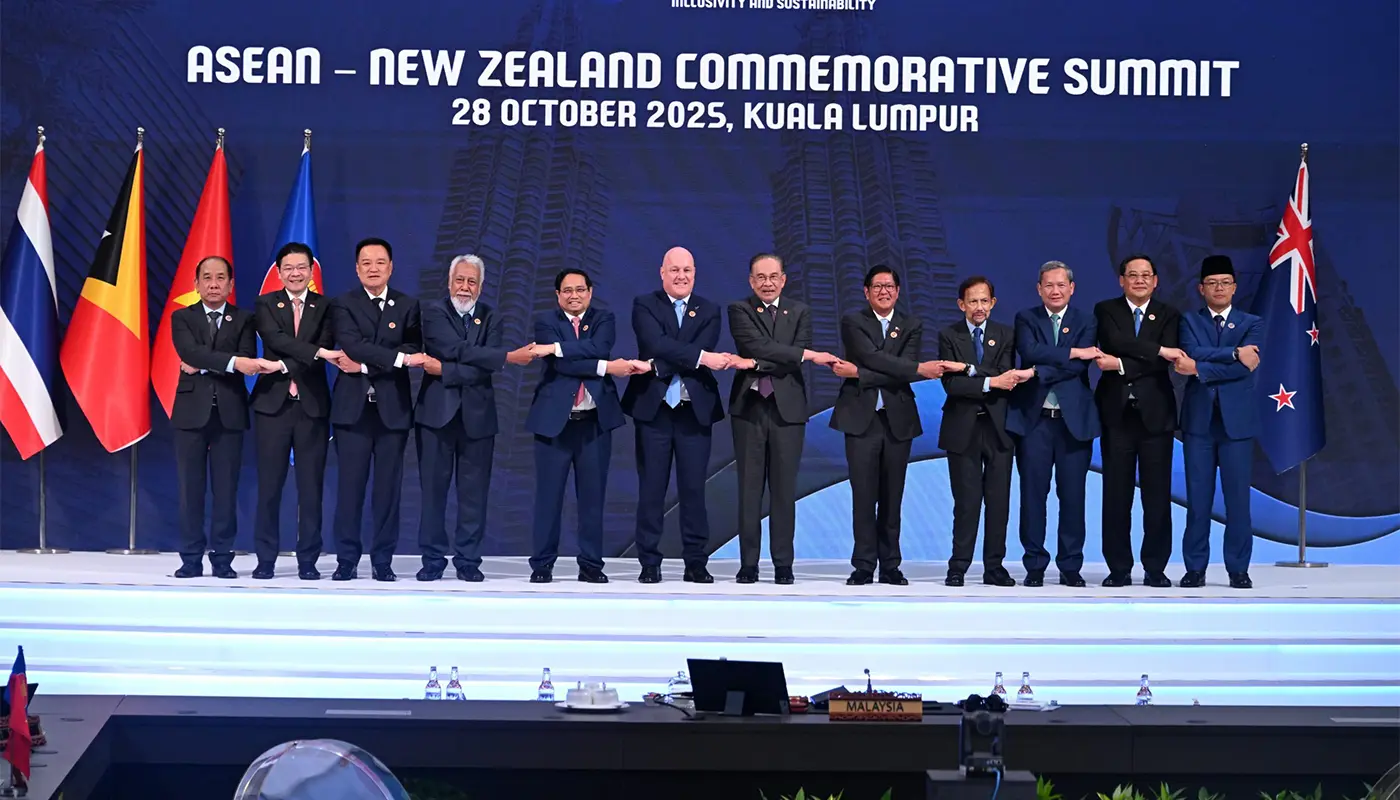KUALA LUMPUR – Leaders from the Association of Southeast Asian Nations (ASEAN) and New Zealand formally upgraded their long-standing dialogue relationship to a full-blown “Comprehensive Strategic Partnership” (CSP).
The milestone marked the 50th anniversary of dialogue relations between the two sides and sets a new framework for deeper cooperation across multiple strategic fronts.
During the commemorative summit, held on the sidelines of the 47th ASEAN Summit in Malaysia, participants endorsed a Joint Vision Statement and a new Plan of Action covering 2026-2030. These documents outline cooperation under four key pillars: Peace, Prosperity, People and Planet.
For example, Vietnam’s Prime Minister Phạm Minh Chính, in his capacity as ASEAN coordinator of the ASEAN-New Zealand relationship for 2024-27, stressed the “historic significance” of the upgrade, saying it reflects “the maturity, closeness and depth of cooperation between the two sides”.
A core theme of the summit was economic integration. New Zealand’s Prime Minister Christopher Luxon highlighted that two-way trade between New Zealand and the ASEAN bloc has reached roughly US $30 billion annually, and announced a new regional air services agreement to complement existing free-trade arrangements. “We trade in three days now what we did in all of 1975,” he remarked.
The partnership is aimed at reinforcing not only economics, but also connectivity, innovation and green growth across the region. The ASEAN-New Zealand agenda emphasises collaboration in sustainable agriculture, digital economy development, and non-traditional security threats such as cybercrime and climate change.
On the diplomatic and geopolitical front, both parties reaffirmed a commitment to a rules-based regional order anchored by ASEAN centrality. Luxon argued that in a region “where old certainties are no longer guaranteed”, the partnership gives both sides “agency to shape our regional and global order”.
In Kuala Lumpur, Datuk Seri Anwar Ibrahim, Malaysia’s Prime Minister and ASEAN 2025 chair, described the partnership as “founded on stability, trust and mutual respect”, remarking that “we have not encountered any serious problems since 1977 – a testament to our mutual respect, shared values and friendship.”
Several ASEAN member states welcomed the CSP as an opportunity to deepen their own bilateral relations with New Zealand. For instance, the Philippines said it anticipates expanded market access, regulatory certainty, and joint ventures in sustainable trade and MSME empowerment under the enhanced partnership.
From a Malaysian perspective, the CSP also brings local significance. Malaysia-New Zealand bilateral discussions on the sidelines of the summit included a shared objective to finalise the review of the Malaysia-New Zealand Free Trade Agreement (MNZFTA) by the end of 2025. Moreover, Malaysia and New Zealand pledged closer cooperation in the halal sector and deeper trade links.
Looking ahead, the CSP foresees biennial ASEAN-New Zealand leader-level summits, rather than more sporadic meetings under the previous dialogue-partner status. This institutional shift signals a commitment to sustained high-level engagement and a strategic depth of partnership rather than ad-hoc collaboration.
For ASEAN, the upgrade with New Zealand helps reaffirm its relevance in an Indo-Pacific environment marked by intensifying great-power competition, economic disruption and geostrategic uncertainty. For New Zealand, it opens growth channels deeper into Southeast Asia and opportunities to act as a bridge between the Pacific and the region.
In sum, the new CSP between ASEAN and New Zealand sets a platform for the next phase of their partnership: one that goes beyond trade and diplomacy, embracing people-centred development, technology and climate resilience, underpinned by shared values of openness and regional integration.









